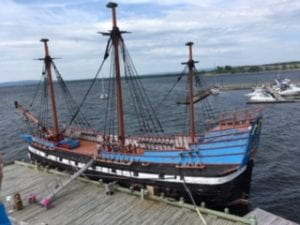The weather, bright, cool and dry! The coast rocky with steel blue waters like the coast of Maine. The Acadian Stew and the Chicken Medley awakening tastebuds. A cheerful entry into the maritime culture of eastern Canada.
Day One, great immersion into the history by Prof. Jay White, who seemed capable to trace the history of every building in Halifax. Nova Scotia was farmed by waves of immigrants from the abortive seventeenth century Scots to the the eighteenth century French Acadians and Germans, to later migrations of the Scots and Brits who finally settled in the land. The Acadians suffered the 18th century expulsion by the Earl of Halifax, which carried them down the eastern coast of American Colonies before they eventually moved on to New Orleans. In the nineteenth century Samuel Cunard carried tourists and settlers across the Atlantic and built a reputation for cruising, as well as transporting immigrants.
Day Two, the extraordinary model of the “Ship Hector” that carried 189 hopeful Scottish settlers to Pictou, Nova Scotia in 1773. They were given a false bill of goods by the con man, JohnPagan, making an eleven-week voyage in the steerage of the ship, reminiscent of the harsh quarters of 20th century Concentration Camps and losing 18 to smallpox before they landed. 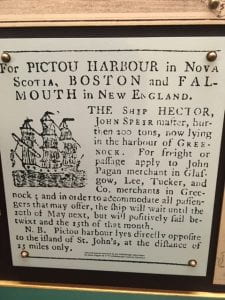
When they arrived the land was not cleared, the winter was bad, and they lost another 20 or so. Still, the Hector was re-created in 1999 to commemorate their voyage, and we got to go below and see the dark, cramped quarters they endured.
In the afternoon we stopped at the Alexander Graham Bell Historic Site, an eye-opening display of one man’s genius and humanitarian spirit. Bell was a chronic dreamer and inventor. He worked on a system for teaching the deaf, which brought him to the Boston School for the Deaf in 1877, a mile from our first home (Kathy’s and mine) in Randolph, MA.
Below with Helen Keller and Annie Sullivan (her teacher).
He discovered the gorgeous sea and hills of Baddeck, Cape Breton in the 1880’s, after he had patented his telephone and began working on tetrahedral kites, then gliders, then machine-driven airplanes around the same time as the Wright Brothers. He worked incessantly with four other men, the Aerial Space Association over an eighteen-month period to perfect a motorized air vehicle. 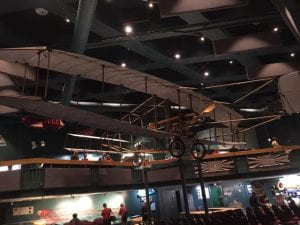
On Day Three Cape Breton. Delightful panoramas of the natural harbors, the steep hillsides, the tourist-lite villages with history to sell and share. Like Cheticamp, the home of hookers of art and industry. These hookers created magnificent rugs, some mass-marketed, some hung in art galleries, some sold to low-rollers passing through on tour buses. “The turning point of the rug industry came when in 1927, Lillian Burke, an artist from New York as well as a friend of the Bell family of Baddeck, visited this area. She became interested in these works of art which she introduced on the U.S. market” [heticampns.com/2015/08/04/rug-hooking/]. She was a mixed blessing, placing Cheticamp on the map of hooking artisans, while pressing the local women to hard labor, according to her exacting standards.
Elizabeth LeFort, a local hooker in large canvases, has displayed her work all over the world, including the Vatican, Buckingham Palace, the White House and at the Museum of Civilization in Ottawa.
At left a crucifixion scene, easily 3′ x 6′ of hooked yarn. Amazing detail for the medium!
Midday we saw the glories of the Gulf of St. Lawrence from the “mountains” of Cape Breton (no more than 2,000 at the highest). The “Cape” is actually an island with the Gulf on one side and the Atlantic Ocean on the other. The steep roads wound through the hills and coastland inspiring with contrast.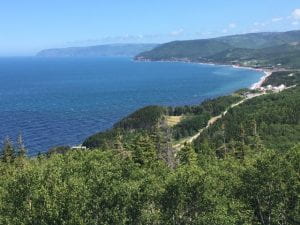
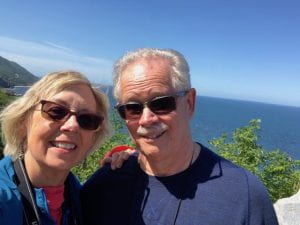
Cape Breton invites gorgeous hiking and camping spectacles when the pioneering spirit kicks in!
We have a day at the reconstructed fort at Louisbourg before we ferry to Prince Edward Island. Appreciated the savvy guides on this trip and the seasonably warm, dry Nova Scotia weather.

